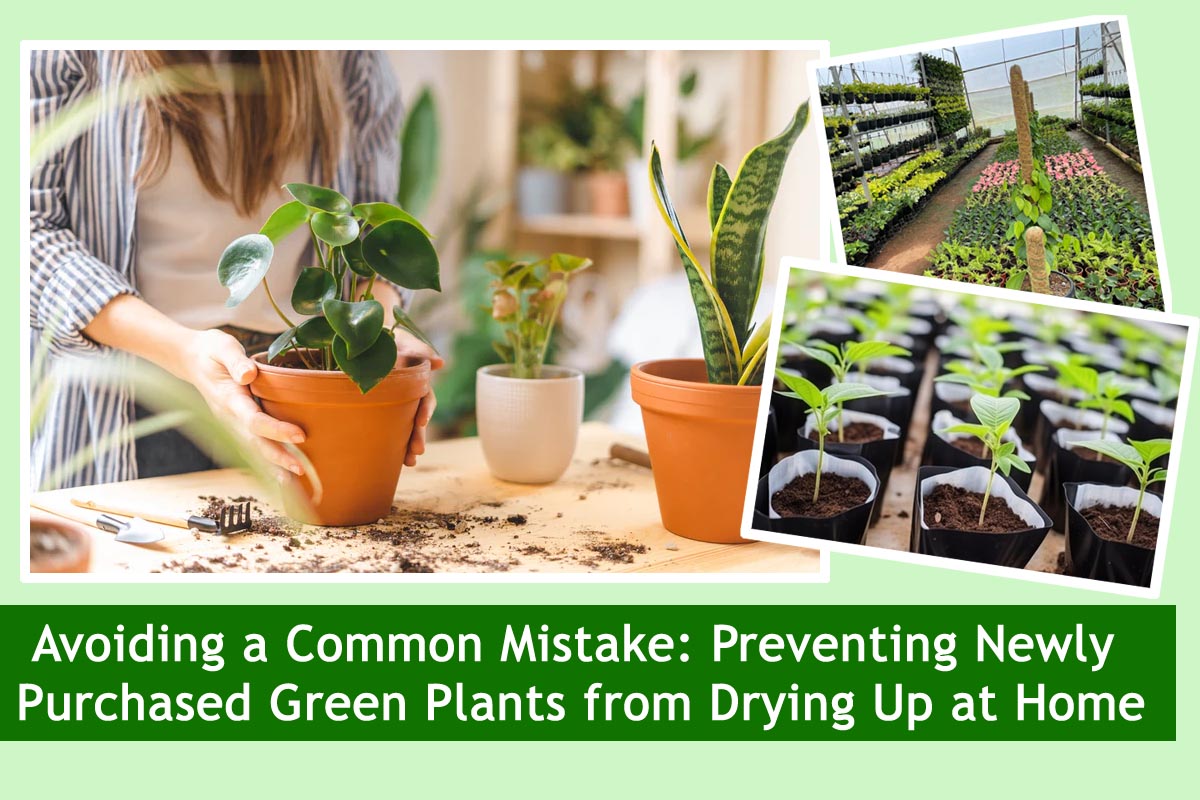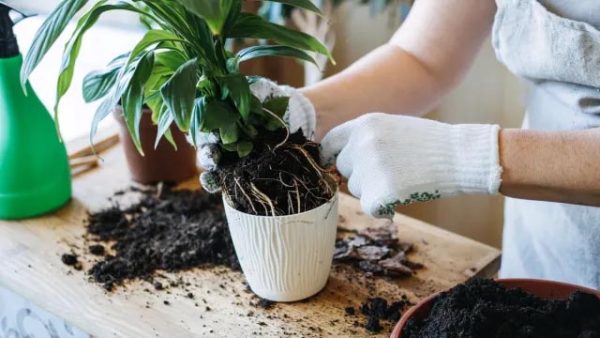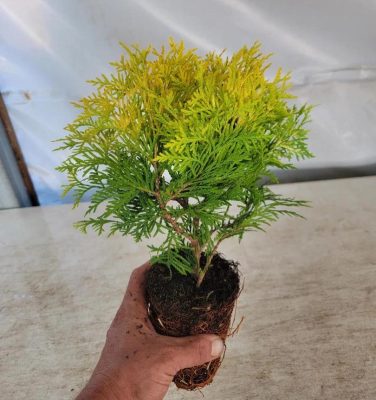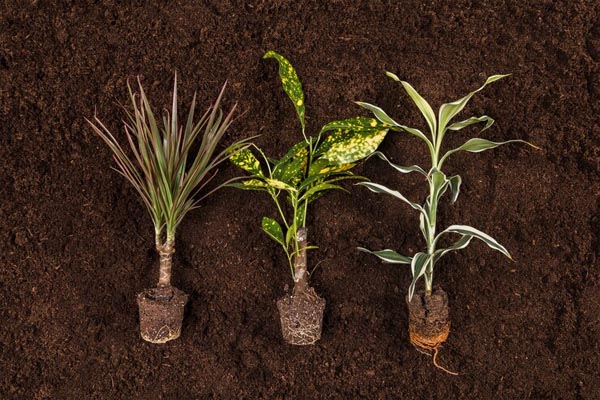
Avoiding a Common Mistake: Preventing Newly Purchased Green Plants from Drying Up at Home
Bringing home a lush, green plant from the nursery is an exciting moment, filled with the promise of adding vibrancy and life to your living space. However, it’s not uncommon for these thriving nursery plants to start showing signs of distress soon after they find a new home. In this blog, we’ll explore a common mistake many plant enthusiasts make and discuss practical tips to ensure your newly acquired green companions stay healthy and vibrant.
The Common Mistake:
One of the most frequent errors when introducing a new plant into your home is paying attention to acclimating it properly. Sudden changes in environmental conditions can shock plants, leading to stress and, in some cases, dehydration. The transition from the controlled environment of a nursery to your home can be drastic, and without careful attention, your plant may exhibit symptoms of drying up.
Understanding the Transition:
Plants are sensitive beings, and their well-being is closely tied to their surroundings. The transition from a nursery to a home involves light, temperature, humidity, and even air circulation changes. You must acknowledge and manage these changes to avoid your plant struggling to adapt, leading to leaves wilting, browning, or drying.

Also Read This : Exploring Garden Containers: A Guide to Types, Pros, and Cons
Practical Tips for Success:
Gradual Acclimatization:
A gradual acclimatization process is one of the most crucial steps in ensuring your plant’s success. Plants, like people, need time to adapt to new surroundings. Start by placing your newly acquired plant in a shaded or partially shaded area for the first few days. This allows it to adjust to the changes in light intensity and avoids shock from sudden exposure to direct sunlight. Over a week, gradually move the plant to its preferred location, whether near a window or in a specific room with the desired light conditions.
Also Read This : Year-Round Harvest: 10 Versatile Vegetables for Your Home Garden
Monitor Watering Needs:
Proper watering is a cornerstone of successful plant care. Before bringing your plant home, research its specific watering requirements. Different plants have different needs, and overwatering or underwatering can lead to stress and drying up. Check the moisture levels in the soil regularly, especially during the acclimatization period. Use your fingers to assess the soil’s dampness, and water only when the top inch feels dry. Ensure proper drainage in your plant’s pot to prevent waterlogging, a common cause of root rot.

Also Read This : Blooming Brilliance: Cultivating Vibrant Bougainvillea from Cuttings
Maintain Consistent Conditions:
Plants thrive in stable environments. While it might be challenging to replicate the exact conditions of a nursery, aim to provide a consistent and comfortable atmosphere for your plant. Avoid placing it near drafts, vents, or heaters that can create fluctuations in temperature. Consistent humidity levels are also crucial for many plants, so consider using a humidity tray or a room humidifier, especially during the dry winter. Minimizing sudden changes in environmental conditions will help your plant focus on growth rather than a stress response.
Also Read This : 13 Mesmerizing Flowering Succulents: A Blooming Garden Delight
Inspect for Pests and Diseases:
Before bringing a new plant into your home, inspect it thoroughly to ensure it’s free of pests and diseases. Check both sides of the leaves, stems, and the soil surface. Shipping the plant in a separate area can prevent potential infestations from spreading to your existing plant collection. If you notice any signs of pests or diseases, treat them promptly using organic solutions or insecticidal soap. Early intervention can save your plant from unnecessary stress and ensure its vitality.

Also Read This : Spring: Nature’s Perfect Season for Plant Growth
Proper Soil and Pot Selection:
The foundation of a healthy plant starts with a suitable soil and pot combination. Different plants have specific soil requirements, so choose a well-draining mix tailored to your green companion. Ensure the pot has drainage holes to prevent water from accumulating at the bottom, as stagnant water can lead to root rot. If you’re repotting your plant upon arrival, use this opportunity to inspect the roots for any signs of damage or disease. Healthy roots contribute to a thriving plant above the soil line.
Also Read This : Bottom-Watering: A Friendlier Approach to Potted Plant Care
Prune Strategically:
Pruning is essential to plant care, promoting healthy growth and maintaining an attractive appearance. Upon bringing your plant home, inspect it for damage, yellowing, or dead leaves. Gently remove these with clean, sharp scissors or pruning shears. This enhances the plant’s aesthetic appeal and redirects energy toward new growth. Avoid excessive pruning, as this can cause stress, particularly during acclimatization.

Also Read This : Thriving in Minimal: 7 Indoor Plants That Excel in Low-Nutrient Soil
Fertilize Mindfully:
While providing essential nutrients is crucial for plant health, it’s necessary to approach fertilization cautiously, especially during the initial weeks after bringing a plant home. Newly purchased plants often come with residual nutrients from the nursery, and over-fertilizing can lead to chemical burns or nutrient imbalances. Wait at least a month before considering any fertilization, and then use a balanced, diluted fertilizer according to the specific needs of your plant species.
Also Read This : Homegrown Happiness: Tips and Tricks for Thriving Strawberry Plants
Observe and Adjust:
Lastly, pay close attention to your plant’s behaviour and adjust your care routine accordingly. Watch for any changes in leaf colour, texture, or overall appearance. If you notice signs of stress, such as wilting or browning, reassess the plant’s placement, watering schedule, or environmental conditions. Your plant continuously communicates its needs, and being attuned to these signals allows you to provide personalized care for optimal growth.
Also Read This : Growing Brinjal (Eggplant) at Home: A Comprehensive Guide for a Bountiful Harvest
By understanding the needs of your newly acquired green plant and taking proactive measures during the transition, you can avoid the common mistake of letting it dry up at home. Give your plant the time and care it deserves, and soon, you’ll enjoy the beauty and benefits of a thriving indoor garden. Remember, a little attention during those crucial first days can make a significant difference in your green companions’ long-term health and vitality.




